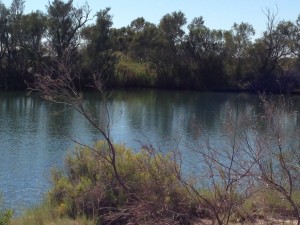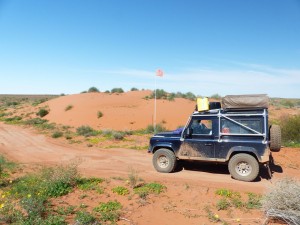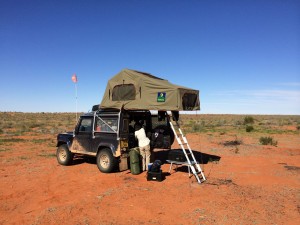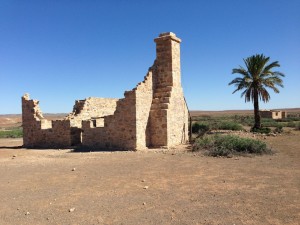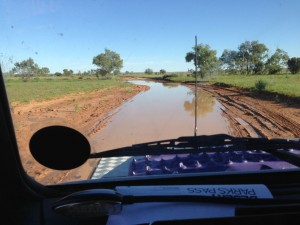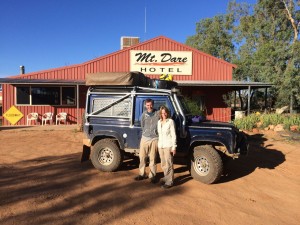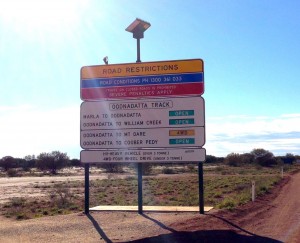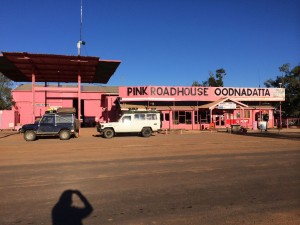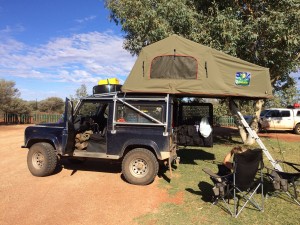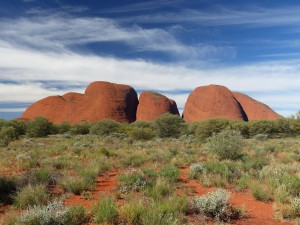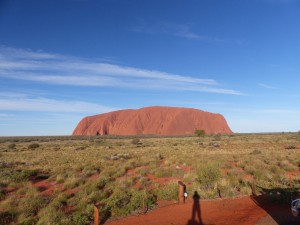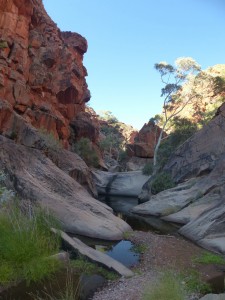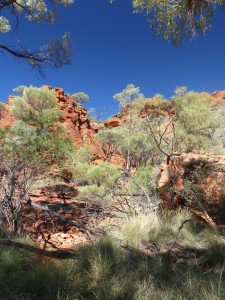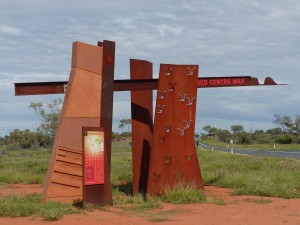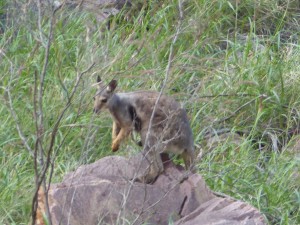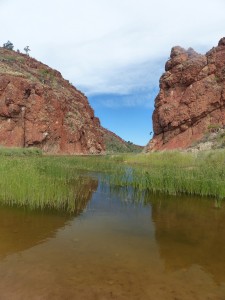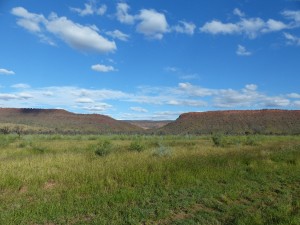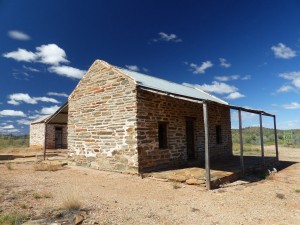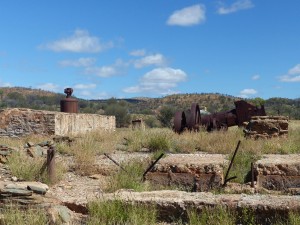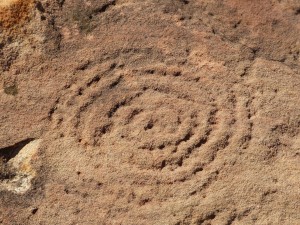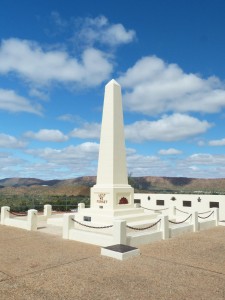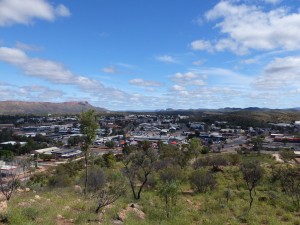We managed to get away from Mount Dare in good time this morning after topping off both fuel tanks and filling the 20 litre jerry can as insurance. We’ve gone over the consumption figures time and time again now and think we’ve comfortably got enough fuel to make it – I think we could almost make it on just the main tank and jerry can leaving us 60 litres in hand.
We retraced 60km of our route from yesterday back to Dalhousie first thing before turning to Dalhousie Springs for our first stop. The road hadn’t got any better overnight but at least I knew what to expect !
The springs are a natural hot water spring that have created a small lake. The water temperature of the lake is around 36 degrees C so about the same temperature as a warm bath. I had expected the water to smell of sulphur or similar but it seemed odourless. If we’d camped overnight at the springs I’d have been tempted to take a dip !
At Dalhousie Springs there was a notice that the Purni Bore camp site is closed for building work. That was our intended camp site for tonight but we decided with that closed we’d just push on into the desert.
The road to Purni Bore was badly corrugated and by the time we got that far we were getting a bit fed up of the constant vibration. From Purni Bore though we started to get into the real desert with sand becoming more predominant than clay and rock. This meant that the corrugations gradually diminished and we just had the soft sand and dunes to contend with.
The first part if the French Line is shared with the other routes that cross the desert. All in all it was pretty easy going with a bit of a rhythm to it as you crested each sand dune, a short flat section then onto the crest of the next dune. None of the established route gave us any issues in high box without diff lock although I did have an experiment on one of the dunes that had been bypassed slightly to see how the Land Rover would behave on the tyre pressures I’d selected. The first two attempts without diff lock failed just short at the crest but with diff lock in it pulled over the crest with little effort on the third attempt so it seems the tyre pressures are somewhere in the right ball park.
After the first junction on the track, where the various crossing routes diverge, the track changes character yet again. The French Line becomes a very narrow single track and even in the Land Rover with it’s narrow body we were brushing the bush on either side. The track also develops “humps” which are fairly widely spaced and give the suspension a real workout while limiting the speed you can travel at. A lot of the time we were limited to speeds below 20kph by the humps.
Where we pulled off the track and set up camp tonight (26.20018°S, 136.52490°E) we have covered around 175km of the 500km distance to Birdsville from Mount Dare. We have another 160km of the French Line to cover before Poeppel Corner where we head into Queensland on the QAA track. The French Line is the hardest of the tracks so we’ll take it steady again tomorrow and see how far we get.
It’s great to be able to just pull over anywhere you want and set up camp in the middle of nowhere. Sat here, at least 175km away from any form of civilisation, there’s a real feeling of peace and tranquility. That’s one of the things we’ve both been waiting for I think on this trip. No Mosquitos here so once the sun went down and the really annoying flies departed it turned into a really pleasant evening. There’s a full moon so the stars aren’t bright yet which is a bit of a shame as nothing beats a cloudless night sky in the desert.

